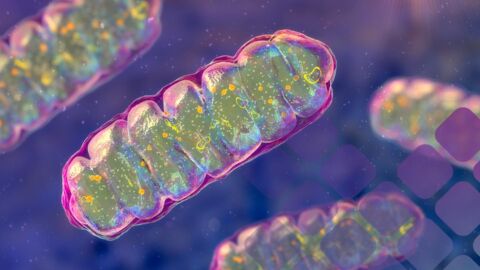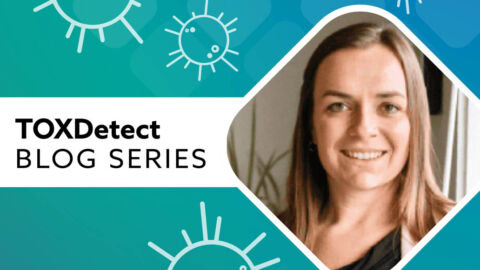Guidelines for the treatment of yeast have been documented in the literature for nearly every major organ system (Pappas). Yet, a standard of care for gastrointestinal yeast treatment is surprisingly absent despite the large body of work demonstrating that pathogenic yeast causes harm to various aspects of the gastrointestinal tract (Zwolinska, Brzozowski). Clinicians suspicious of GI yeast overgrowth typically perform a fecal analysis with culture and sensitivity. While this method is ideal for the effective treatment of yeast, it is poorly understood why patients with yeast overgrowth often test negative upon laboratory examination of stool (Maaroufi, Shaw). Up to 50% of stool analysis negative for yeast species returned positive on PCR (Maaroufi). Metabolites of yeast detected in The Great Plains Laboratory Organic Acids Test are a very reliable method of detecting yeast (Shaw). However, this test cannot determine the exact organism and therefore its susceptibility to antifungals (Shaw). It also cannot determine the exact location of the yeast overgrowth but clinical experience has shown that the majority of cases are in fact GI related. The documentation set forth is based broadly on in vivo and in vitro studies on the antifungal properties of the natural agents, documentation of yeast infections involving organ systems other than the GI tract, and yeast overgrowth in the GI of the irritable bowel patient population.
PROBIOTIC SUPPORT
Evidence:
Candida: Promising data by several small studies has demonstrated the use of probiotics as effective against numerous pathological conditions caused by Candida. In these studies, Lactobacillus GG, L. acidophilus, and Saccharomyces boulardi were the predominant probiotics shown to be effective with L. GG demonstrating the ability to induce antibody formation against Candida in immune deficient mice. Probiotics have been shown to accelerate the healing of various pathological conditions in the gastro-intestinal tract when Candida is present (Zwolinska 2006 & 2009, Hatakka). Probiotics have also been shown to accelerate immune response to Candida in several murine simulations (Wagner, Zwolinska 2006 & 2009).
Aspergillus: Data on the effectiveness of probiotics against Aspergillus infection is not available. Aspergillus infections are thought to be rare in comparison to other yeast species such as Candida. However, a recent study indicated a high percentage of Aspergillus in stool samples of patients with Crohn’s disease. (Li) Aspergillus infections are usually associated with pulmonary infection and or post-surgical complications that are often very acute. The severity of the Aspergillus complications and small numbers of infection are presumably responsible for the lack of research in this regard. The relative safety of Lactobacilli, bifidobacteria, and lactococci has been demonstrated extensively in the literature. Incorporation of these probiotics into a protocol for Aspergillus treatment may be considered appropriate in many cases.
Studies on the use of probiotics for gastrointestinal healing have been aimed at a wide range of populations. To date, the most promising studies have been in the treatment and prevention of acute infectious diarrhea, viral gastroenteritis, antibiotic associated diarrhea, ulcerative colitis, and necrotizing enterocolitis in preterm infants (Manzoni, Zwolinska, Szajewska). In all of these conditions, inflammation is of a primary concern.
Risks: Reports of bacteremia and even a few isolated cases of sepsis have been documented in the literature from the Lactobacillus genera including L. rhamnosis, L. plantarum, L. casei, L. paracasei, L. salivarius, L. acidophilus (Snydman, Borriello). Cases of sepsis have also been documented for the usually beneficial yeast Saccharomyces boulardi. In some cases, the cultures were linked to a probiotic supplement, in others, the bacteria were found to be intrinsic to the patient’s own microflora (Snydman, Borriello). In all of the cases, the patients were severely immunocompromised and often had feeding tubes, short gut syndrome, and/or a central line (Snydman, Borriello, Munoz, Herbrecht). The cases of sepsis have most commonly been associated with S. boulardi (Munoz, Herbrecht). However, fungemia from S. boulardi infection is rare in comparison to the population believed to be taking the supplement (Herbrecht, Munoz). In one study, increase in bacteremia from Lactobacillus did not increase over a decade, despite the 6 fold increase in probiotic use (Borriello). These data indicate that individuals taking probiotics are not at any greater risk than the general population for bacteremia associated with Lactobacillus. Regardless, the practitioner should exercise caution in severely immunocompromised patient populations to reduce any risk to the patient.
Rationale:
Promote the immune response against intestinal yeast overgrowth. To promote healing and reduce inflammation in the intestinal mucosa during yeast overgrowth.
Dosing:
The strain most commonly championed in the literature is that of Lactobacillus GG in doses of 10 billion colony forming units (CFU’s) taken early in treatment. Saccharomyces thermophilus and S. boulardi were found to be effective in some studies and less effective in others. A daily intake of 10^6 to 10^9 CFUs is reportedly the minimum effective dose for therapeutic purposes.
ALLICIN
Evidence:
Allicin is the active ingredient found in garlic. The most commonly understood mode of action for allicin is linked to its ability to cross cell membranes and combine with sulfur-containing molecular groups in amino acids and proteins, thus interfering with cell metabolism (Davis, Singla). The antimicrobial properties of allicin have been demonstrated in numerous in vitro and in vivo murine models (Davis, Guo, Shadkchan). The antifungal properties of allicin have been shown to potentiate the effectiveness of fluconazole, the synergistic combination being the most effective at killing Candida species in kidney cells (Guo). Human studies have been targeted largely toward cardiovascular and antihypertensive effects and little has been done to demonstrate the antimicrobial properties (Fugh-Berman, NACAM). However, a study in China reports successful use of intravenous allicin against invasive fungal infections (Davis).
The strength of the supplement is affected by the preparation of garlic. Studies have shown that water, oil, and high temperatures can degrade allicin content (Singla). Interestingly powdered garlic is found to be the highest in allicin (Singla). Interestingly, powdered preparations of garlic for cooking were found to have a greater allicin content than nine supplement tablets studied (PDR). There are also pure allicin extracts available on the market for use.
Risks: Studies have demonstrated that allicin can inhibit platelet aggregation in blood and several cases of bleeding complications have been documented. All of which were following an invasive procedure (Fugh-Berman). Allicin may also increase production of insulin by pancreatic cells causing the potential for hypoglycemia in some patient populations. Allicin may also inhibit cholesterol synthesis in the liver causing exacerbation of developmental delay in children with low cholesterol levels. Physicians should use caution in patients with bleeding conditions, on blood thinners, with hypoglycemia, or diabetics who are insulin dependent. Cholesterol testing is advised for children with developmental disorders prior to supplementation with allicin.
Rationale:
Mild antifungal therapy when prescriptive agents are unavailable or contraindicated and where dosing by weight is required (such as for children). Promote the synergistic modulation of antifungal therapy with fluconazole.
Dosing:
Insufficient evidence exists in US literature for dosing recommendations, especially for children. However, there are several governing bodies outside of the US that regulate supplementation and provide a guideline for dosing. According to the National Center for Complementary and Alternative Medicine in the US, allicin is considered safe for most adults. Use of allicin for antifungal treatment may be appropriate in doses as high as one milligram per kilogram of body weight. Human studies have demonstrated that doses of allicin effectively potentiated the effects of antifungal treatment in doses of 7.8 – 27 mg per dose. The European Scientific Cooperative on Phytotherapy (ESCOP) recommends 3 to 5 milligrams allicin daily (1 clove or 0.5 to 1.0 gram dried powder) for the prevention of atherosclerosis. The World Health Organization (WHO) recommends 2 to 5 grams fresh garlic, 0.4 to 1.2 grams of dried powder, 2 to 5 milligrams oil, 300 to 1,000 milligrams of extract, or other formulations that are equal to 2 to 5 milligrams of allicin daily. The European Scientific Cooperative on Phytotherapy (ESCOP) recommends 2 to 4 grams of dried bulb or 2 to 4 milliliters of tincture (1:5 dilution in 45% ethanol), by mouth three times a day for upper respiratory tract infections.
MCT OIL/ CAPRYLIC ACID/MONOLAUREN/COCONUT OIL
Evidence:
There are numerous in vitro and in vivo animal studies that demonstrate the effectiveness of coconut oil and/or its medium chain fatty acid constituents (Caprylic Acid, Capric Acid, and Lauric Acid) against Candida and other pathogens (Bergsson, Batovska, Huang, Dayrit). Human trials are much more limited. Therefore the evidence for treating yeast with this substance is based on the clinical observation of physicians who commonly treat yeast conditions. Physicians who routinely treat patients for Candida report very good success with using MCT oil/Caprylic acid. In his book, The Yeast Connection, Dr. Crook sites numerous examples of physicians who have reported this supplement as clinically useful (Crook).
Immunomodulating Properties: Like Omega-3 fatty acids, MCT’s produce fewer inflammatory eicosanoids of the two- and four-series (Wan). Several in vivo studies have demonstrated anti-inflammatory properties of MCT oil and antipyretic and analgesic properties have also been documented (Canela, Intahphuak). In vivo MCTs may reduce intestinal injury and protect from hepatotoxicity which is a concern in patients taking fluconazole and itraconazole antifungal therapy (Berit, Kono). Human studies are few but promising as many of the studies are on severely immunocompromised patients who require total parernteral nutrition (TPN) and the HIV/AIDS patient population (Wanke, Dayrit, Craig, Wolfram, Chen). This patient population has responded well to the addition of MCT’s. The degree to which these results apply to the general population is unclear. However, the safety of this supplement can be inferred given its effective use in severely immune compromised patient populations.
Risks: Acute toxicity tests conducted in several species of animal demonstrate that MCTs are essentially non-toxic. Ninety-day toxicity tests did not result in notable toxicity, whether the product was administered in the diet up to 9375mg/kg body weight/day or by intramuscular injection (up to 0. 5ml/kg/day, rabbits). Levels of up to 1g/kg/day have been confirmed safe in several clinical human trials (Traul). The use of MCT is only contraindicated in patients with impaired states of fat metabolism such as ketosis, acidosis, and cirrhosis (Bach).
Rationale:
Mild antifungal therapy when prescriptive agents are unavailable or contraindicated and where dosing by weight is required (such as for children).
Dosing:
Caprylic acid: PDR for nutritional supplements indicate dose as 300-1200 mg daily
Monolauren: 240 – 720 mg three times daily (adults)
Virgin coconut Oil: 2 ml/kg/day of virgin coconut oil in children
MCT: levels of up to 1g/kg/day have been confirmed safe in several clinical human trials.
Clinical References:
- Bach, AC., Babayan, VK. (1982). Medium Chain Triglycerides: un update. American Journal of Clinical Nutrition, 36(5); 950-962
- Batovska, D., et al. (2009). Antibacterial study of the medium chain fatty acids and their 1-monoglycerides: individual and synergistic relationships. Polish journal of Microbiology, 58(1); 43-7.
- Bergsson, G., et al. (2001). In vitro killing of Candida albicans by fatty acids and monoglycerides. Antimicrobial Agents and Chemotherapy, 45(11); 3209-12.
- Berit, M., Pfeuffer, M., Schrezenmeir, J., (2006). Medium Chain triglicerides. International Dairy Journal, 16(11) 1378-1382.
- Borriello, S., et al. (2003). Saftey of Probiotics that Contain Lactobacilli or Bifidobacteria. Clinical Infectious Disease, 36(6); 775-780. Doi 10.1086/368080
- Brzozowski, T., et al (2005). Influence of gastric colonization with Candida albicans on ulcer healing in rats: Effect of ranitidine, asprin and probiotic therapy. American Journal of Gastroenterology, 40(3); 286-296.
- Canani, R., et al. (2007). Probiotics for treatment of acute diarrhea in children: randomized clinical trial of five different preparations. BMJ, 335-340. Doi 10.1136/bmj.39272.581736.55
- Canela, GO., (2007). Anti-inflammatory activity of virgin coconut oil. The Philippine Journal of Internal Medicine, 45(2) 85-88.
- Craig, GB., et al. (1997). Decreased fat and nitrogen losses in patients with AIDS receiving medium chain triglyceride-enriched formula vs those receiving long-chain-triglyceride containing formula. Journal of the American Dietetic Association, 97(6); 605-11.
- Chen, FM., et al. (2005). Efficacy of medium-chain triglycerides compared with long-chain triglycerides in total parenteral nutrition in patients with digestive tract cancer undergoing surgery. The Kaohsiung Journal of Medical Sciences, 21(11); 487-94.
- Crook, W. (2000). The Yeast Connection Handbook. Jackson, TN: Woman’s Health Connection.
- Davis, S. (2005). An overview of the antifungal properties of allicin and its breakdown products-the possibility of a safe and effective antifungal prophylactic. Mycoses, 48(2); 95-100. DOI: 10.1111/j.1439-0507.2004.01076.
- Dayrit, C. (2000). Coconut oil in Health and Disease: Its and Monolauren’s potential as cure for HIV/AIDS. Read at the XXXVII Cocotech Metting Chennai, India July 25, 2000. http://coconutresearchcenter.org/article10526.pdf
- Fugh-Berman, A., (2000). Herbs and Dietary Supplements in the Prevention and Treatment of Cardiovascular Disease. Preventive Cardiology, 3(1); 24-32. Doi:10.1111/j.1520-037X.2000.80355.
- Guo, N., Wu, X.,, et al. (2010). In vitro and in vivo interactions between fluconazole and allicin against clinical isolates of fluconazole-resistant Candida albicans determined by alternative methods. FEMS Immunology and Medical Microbiology, 58(2); 193-201. Doi: 10.1111/j.1574-695X.2009.00620.
- Hatakka, K., et al. (2007). Probiotics Reduced the Prevalence of Oral Candida in the Elderly – a Randomized Controlled Trial. Journal of Dental Research, 86 (2); 125-130. doi: 10.1177/154405910708600204
- Herbrecht, R., Nivoix, Y., (2005). Saccharomyces cervisiae Fungemia: an adverse effect of Saccharomyces boulardi probiotic Administration. Clinical Infectious Disease, 40(11); 1635-1637. Doi 10.1086/429926
- Huang, CB., Alimova, Y., Myers, TM., Ebersole, JL. (2011). Short and medium chain fatty acids exhibit antimicrobial activity for oral microorganisms. Archives of Oral Biology, 56(7); 650-4.
- Intahphuak, S. et al. (2010). Anti-inflammatory, analgesic, and antipyretic activities of virgin coconut oil. Pharmaceutical Biology, 48(2); 151-7.
- Khodavandi, A., Alizadeh, F., et al. (2011). Comparison between efficacy of allicin and fluconazole against Candida albicans in vitro and in a systemic candidiasis mouse model. FEMS Microbiology Letters, 315. Kono, H., et al. (2003). Protective effects of medium-chain triglycerides on the liver and gut in rats administered endotoxin. Annals of Surgery, 237(2); 246-55.
- Li, Qiurong., et al. (2014). Dysbiosis of Gut Fungal Microbiota is Associated with Mucosal Inflammation in chrohn’s Disease. Journal of Clinical Gastrointerology, 48:513-523.
- Maaroufi, Y., Heymans, C., De Rune, J., Duchateau, H. (2003). Rapid Detection of Candida albicans in Clinical Blood Samples by Using a TaqMan-Based PCR Assay. Journal of Clinical Microbiology, 41; 3293-3298.
- Manzoni, P., et al. (2006). Oral Supplementation with Lactobacillus casei Subspecies rhamnosus Prevents Enteric Colonization by Candida Species in Preterm Neonates: a Randomized Study. Clinical Infectious Diseases, 42(12); 1735-1742. doi: 10.1086/504324
- Munoz, P., et al. (2005). Saccharomyces cerevisiae fungemia: and emerging infectious disease. Clinical Infectious Disease, 40(11); 1625-34.
- National Center for Complimentary and Alternative Medicine (NCCAM). Herbs at a Glance: Garlic. Retrieved on 3/3/2014 from http://nccam.nih.gov/health/garlic/ataglance.htm
- Snydman, D. (2008). The Safety of Probiotics. Clinical Infectious Diseases, 46(2); S104-S111. Doi 10.1086/523331
- Pappas, P., et al. (2004). Guidelines for Treatment of Candidiasis. Clinical Infectious Diseases. 38; 161-189
- Shadkchan, Y., Shemesh, E., et al. (2004). Efficacy of allicin, the reactive molecule of garlic, in inhibiting Aspergillus spp. In vitro, and in a murine model of disseminated aspergillosis. Journal of Antimicrobial Chemotherapy, 53; 832-836. doi: 10.1093/jac/dkh174.
- Shaw ,W., (2008) Biological Treatments for Autism and PDD. Publisher: Author.
- Singla, V., Bhaskar, R, (2011). Garlic: a review. International Journal of Drug Formulation, 2. Retrieved from http://www.ordonearresearchlibrary.org/Data/pdfs/IJDFR80.pdf
- Szajewska, H., Skorka, A., Dylag, M. (2006) Meta-analysis: Saccharomyces boulardii for treating acure diarrhea in children. Alimentary Pharmacology and Theraputics, 25(3); 257-264. Doi 10.1111/j.1365-2036.2006.03202.x
- Szajewska, et al., (2006). Probiotics in Gastrointestinal Diseases in Children: Hard and Not-So-Hard Evidence of Efficacy. Journal of Pediatric Gastroenterology and Nutrition, 42(5); 454-475. Doi 10.1097/01.mpg.0000221913.88511.72
- Wagner, D., et al. (2000). Effects of probiotic bacteria on humoral immunity to Candida albicans in immunodeficient bg/bg-nu/nu and bg/bg-nu/+ mice. Journal of Microbiology/Immunology, 17; 55-59. Pdf http://www.reviberoammicol.com/2000-17/055059.pdf
- Traul, KA., Driedger A., Ingle DL., Nakhasi, D. (2000). Review of the toxicologic properties of medium-chain triglycerides. Food and Chemical Toxicology, 38(1), 79-98.
- Wan, JM., TEO, TC., Babayan, VK., Blackburn GL. (1988). Invited Comment: lipids and the development of immune dysfunction and infection. Journal of Parenteral and Enteral Nutrition, 12(6 supplment); 43s-52s.
- Wanke, CA., et al. (1996). A medium chain triglyceride-based diet in patients with HIV and chronic diarrhea reduces diarrhea and malabsorbtion: a prospective, controlled trial. Nutrition, 12(11-12); 766-71.
- Wolfram, G., (1986). Medium Chain Triglicerides for Total Parenteral Nutrition. World Journal of Surgery, 10; 33-37.
- Zwolinska, M., et al. (2009). Effect of Candida colonization on Human Ulcerative Colitis and the Healing of Inflammatory Changes of the Colon in the Experimental Model of Colitis Ulcerosa. Journal of Physiology and Pharmcology, 60(1); 107-108. Pdf http://jpp.krakow.pl/journal/archive/03_09/pdf/107_03_09_article.pdf
- Zwolinska-Wcislo, M., et al. (2006). Are probiotics effective in the treatment of fungal colonization of the gastrointestinal tract? Eperimental and clinical studies. Journal of Physiology and Pharmcology, 57(9); 35-49. Pdf http://www.jpp.krakow.pl/journal/archive/11_06_s9/pdf/35_11_06_s9_article.pdf






